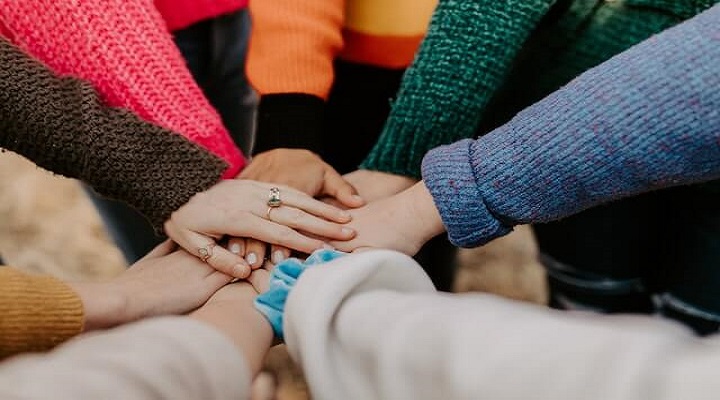Disasters and emergencies can strike at any moment, disrupting lives and communities. In such critical times, preparedness becomes paramount, and one of the most effective strategies is engaging communities in the process. But why is it important to engage communities in preparedness efforts? In this article, we will explore the significance of community involvement in emergency preparedness, highlighting the many benefits it brings to individuals, neighborhoods, and society as a whole.
Contents
- 1 Building Resilience at the Grassroots Level
- 2 Customized Solutions for Unique Challenges
- 3 Faster Response and Recovery
- 4 Strengthening Social Bonds and Trust
- 5 Raising Awareness and Education
- 6 Reducing Vulnerabilities and Disparities
- 7 Enhancing Early Warning Systems
- 8 Strengthening Government-Community Partnerships
- 9 Conclusion
Building Resilience at the Grassroots Level
- Local Knowledge: Communities possess invaluable local knowledge about the specific risks and vulnerabilities they face. Engaging them in preparedness efforts ensures that this knowledge is tapped into, leading to more effective risk assessments and response plans.
- Resilience Through Collaboration: When communities are actively involved in preparedness, they become more resilient. Collaboration fosters a sense of shared responsibility, and neighbors are better equipped to support each other during crises. which of the following is a benefit of unified command
Customized Solutions for Unique Challenges
- Tailored Preparedness Plans: Communities have unique characteristics, needs, and challenges. By engaging them, emergency planners can develop preparedness plans and strategies that are customized to address these specific factors.
- Language and Cultural Sensitivity: In diverse communities, cultural and language considerations are vital for effective communication and understanding. Engaging community members ensures that preparedness materials and messages are culturally sensitive and accessible to all.
Faster Response and Recovery
- Local First Responders: Communities are often the first responders in an emergency. Engaging residents in preparedness efforts empowers them with knowledge and skills to take immediate action, potentially saving lives and property.
- Resource Mobilization: When communities are actively involved, they are more likely to mobilize local resources quickly in the aftermath of a disaster. This can significantly accelerate the response and recovery process.
Strengthening Social Bonds and Trust
- Community Cohesion: Preparedness activities foster a sense of community cohesion. Neighbors who engage in joint planning and training build stronger social bonds, which can be a source of emotional support during and after disasters.
- Trust in Authorities: Engaging communities in preparedness efforts can also increase trust in authorities and institutions. When residents see that their input is valued and acted upon, they are more likely to have confidence in the response and recovery process.
Raising Awareness and Education
- Knowledge Dissemination: Community engagement serves as a platform for disseminating essential knowledge about risks, preparedness, and response. It empowers residents with the information they need to make informed decisions during emergencies.
- Behavioral Change: Preparedness efforts can influence behavioral change. When communities are educated about the importance of disaster preparedness, they are more likely to take proactive measures to protect themselves and their families.
Reducing Vulnerabilities and Disparities
- Vulnerable Populations: Engaging communities allows for a targeted focus on vulnerable populations, such as the elderly, disabled, or low-income residents. Tailored preparedness plans can help reduce disparities in disaster impact.
- Equity and Inclusion: Community engagement promotes equity and inclusion in preparedness efforts. It ensures that all residents have equal access to information, resources, and support, regardless of their background or circumstances.
Enhancing Early Warning Systems
- Local Observations: Communities often have the ability to observe early warning signs, such as changes in weather patterns or local environmental factors. Engaging residents enables the collection of crucial data that can enhance early warning systems.
- Community-Based Monitoring: In some cases, community members actively participate in monitoring and reporting, allowing for faster response to impending disasters.
Strengthening Government-Community Partnerships
- Shared Responsibility: Engaging communities in preparedness efforts emphasizes the shared responsibility between governments and residents. It reinforces the idea that preparedness is not solely the responsibility of authorities but a collective effort.
- Feedback Loop: Through community engagement, governments can receive feedback on the effectiveness of their preparedness plans and make necessary adjustments based on real-life experiences and observations.
Conclusion
Engaging communities in preparedness efforts is not just a strategy; it’s a fundamental necessity in our ever-changing world. The importance of community involvement in emergency preparedness cannot be overstated. It builds resilience, fosters trust, and saves lives.
As individuals, neighbors, and society as a whole, we must recognize the value of community engagement in preparedness. It’s not a one-size-fits-all approach; rather, it’s about tailoring strategies to meet the unique needs of each community, ensuring that no one is left behind.
By actively involving communities in the process of preparing for disasters and emergencies, we empower individuals, strengthen neighborhoods, and contribute to a safer and more resilient future for all. The path to preparedness begins with the active engagement of those who call our communities home.
